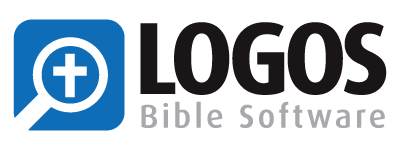So, what's wrong with those results? The problem is that the software is only searching for where the two words occur in the same verse.
So, how do we get around that problem?
- You could just search for "Jesus" and then skim through all the results to look for all the instances when it says, "He was teaching..." (or something similar) and the "he" refers to Jesus.
- The new Logos 5 is trying to accomplish what I just described with their Speaker Labels and their Clause Searches where you can identify with greater specificity who is the subject or being mentioned. This is a great improvement, but it still won't get you all the results, however.
- I don't have the latest version of Accordance, but I know it can do this. (Cf. UPDATE below)
- In BibleWorks, you can specify occurrences within X many verses. (This can be done both from the command line and in the Graphical Search.)
- In Logos, you can specify occurrences within X many words using BEFORE, AFTER, WITHIN, NEAR. (Look here.) For the search to work properly, however, you need to search on the "Surface Text" which is one of the search fields you can specify.
[I checked, and I do recall in Logos 3 that you could search by "Chapters or sections" or by "Verses." Look here. I can't find that option available any more in Logos 5. Anyone know if it's there and how you access it?]
The Hebrew Bible texts have always had some system of markings indicating various levels, and those have largely been incorporated into our modern chapter and verse divisions. For the New Testament, Eusebius divided the Gospels into what we might call pericopes in the 3rd century. Chapter divisions were introduced in the 13th century by Langton. Verses were introduced in the 16th century by Stephanus. (Pagnini had a prior Latin Bible in 1528 that had a different versification scheme that was based on larger units of thought or action. For more on his [superior] versification, look here and here.) For more on all this Wikipedia provides a reliable enough account.
For better Bible searching, then, here is my proposal.
I would like to see the option of being able to search biblical texts within (what I will call) pericopes rather than just within verses. I am not a programmer, so I don't know how difficult of a thing it is I am suggesting. I also know that defining pericope units can also be a subjective decision in many instances. Still, we already have many Bible outlines breaking biblical books into sense units that could be used. (BibleWorks includes 13 outlines as used in the RSV, NIV, NET, ESV, etc. Eusebius' work on the Gospels has been improved with a variety of Gospel synopses.) The beauty of this approach is that I wouldn't need to specify a verse range. I would be more likely to find the instances where Jesus is teaching based on the words of the text. I would automatically get John 7:38-39 when looking for instances of "water AND spirit." I would get Psalm 23 if I look for "shepherd AND staff."
Does anyone else think this would be a good idea for the Bible software programmers to pursue? Am I missing anything? Is there already a way in Accordance, BibleWorks, or Logos to do this of which I am unaware? What about any of the other Bible software programs?
UPDATE 2012.12.01:
- Thanks to Rubén Gómez for pointing out in the comments how in Accordance you can use "scope" to search withing paragraph, chapter, or book. I suppose "paragraphs" would be close to pericopes, but I'd still like to search within something like John 3.1-21 (Jesus and Nicodemus) which is usually broken into 4 paragraphs.
- Thanks also to Devin Roza for pointing out a way you can kind of get at it in Logos. Using the Syntax search feature, you actually are searching within syntactical units. You will get more hits this way, but you still won't get all of them because it still is not searching within conceptual units. (I.e., it won't search across 2 sentences.)
BTW, thanks also for sharing your search on the Faithlife community forum. That worked well for me to connect to it and open it in my Logos.
- In the comments, Dominick Sela appears to have found to get the desired results in Logos by using a Basic Search. To add some specifics, use the Basic Search. Choose to search "Bible Text" (not "All Text") and choose the version you want to search. The scope of the search is within the defined sections of that particular version, so you will get different results depending on the version and how it splits pericopes. Though you cannot conduct morphological searches using Greek/Hebrew, you can still use this Basic Search, choose a Hebrew or Greek text (that has interlinear coding), and search using English terms. The scope appears to be by chapter.

























